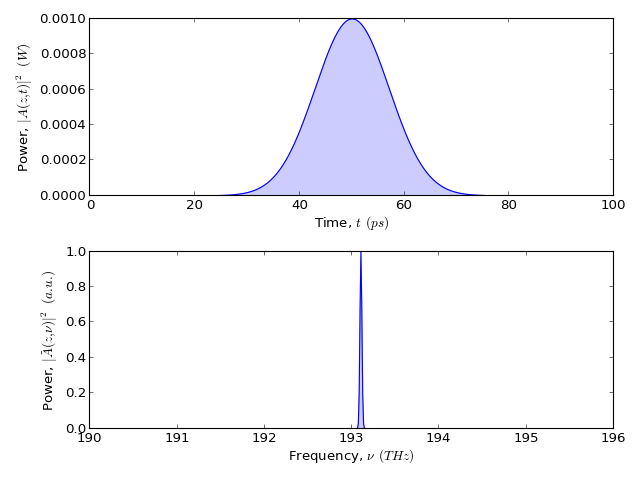1. System¶
Note
It is assumed that pyofss has been imported using
>>> from pyofss import *
Every pyofss simulation begins with a system. To generate a system with a default domain:
>>> sys = System()
which is equivalent to
>>> sys = System( Domain() )
Various modules may be added to the system such as pulse generators, fibres, and filters. Once a module has been generated, add it to the system. As an example, to construct a Gaussian pulse generator and add it to the system:
>>> gaussian = Gaussian()
>>> sys.add( gaussian )
It is also possible to directly add a module using:
>>> sys.add( Gaussian() )
Once all modules have been added, run the simulation
>>> sys.run()
This generates a field which is modified by each module it propagates through.
The output field may be accessed using:
>>> sys.field
A field will generally be an array of complex values. There are utility functions which allow calculating the temporal and spectral power:
>>> P_t = temporal_power( sys.field )
>>> P_nu = spectral_power( sys.field )
There is also a plotter which allows a range of plots to be generated. As an example, the temporal and spectral power of the resulting field may be plotted in a “double” plot:
from pyofss import *
sys = System( Domain() )
sys.add( Gaussian() )
sys.run()
double_plot( sys.domain.t, temporal_power(sys.field),
sys.domain.nu, spectral_power(sys.field, True),
labels['t'], labels['P_t'], labels['nu'], labels['P_nu'] )
(Source code, png, hires.png, pdf)
